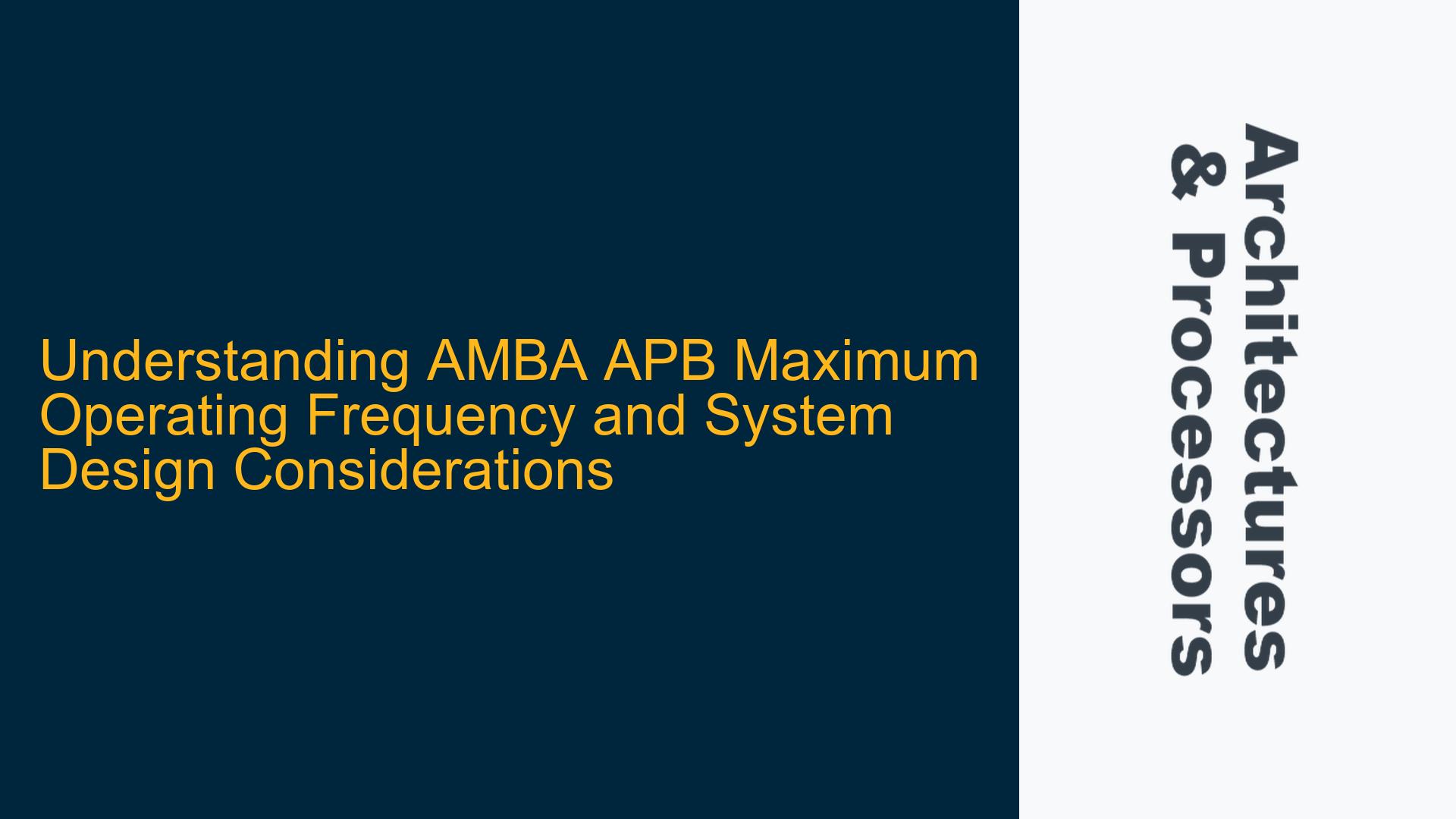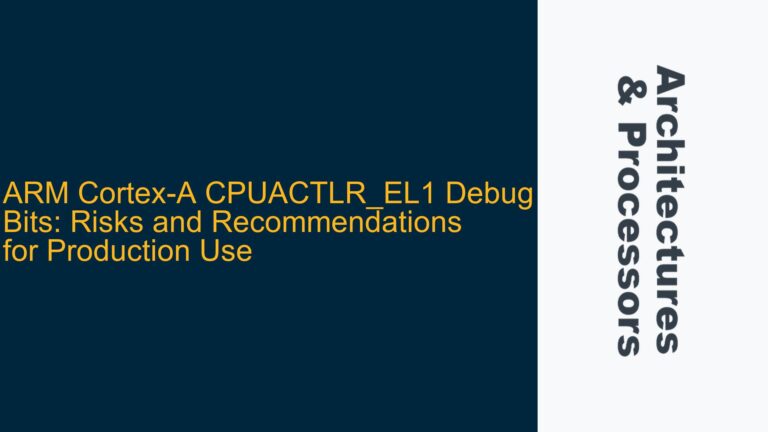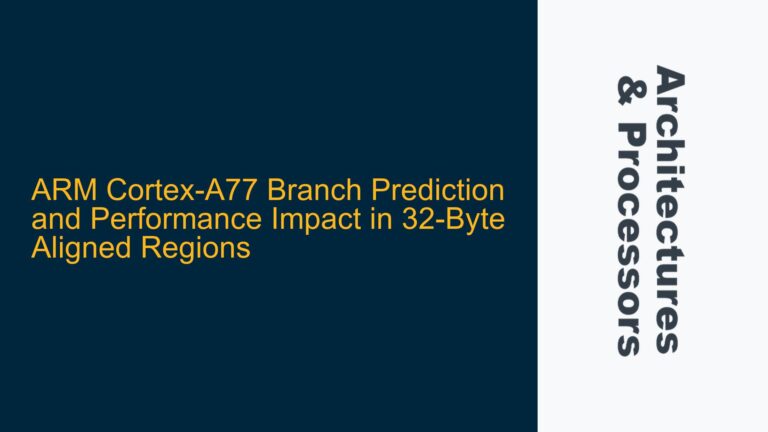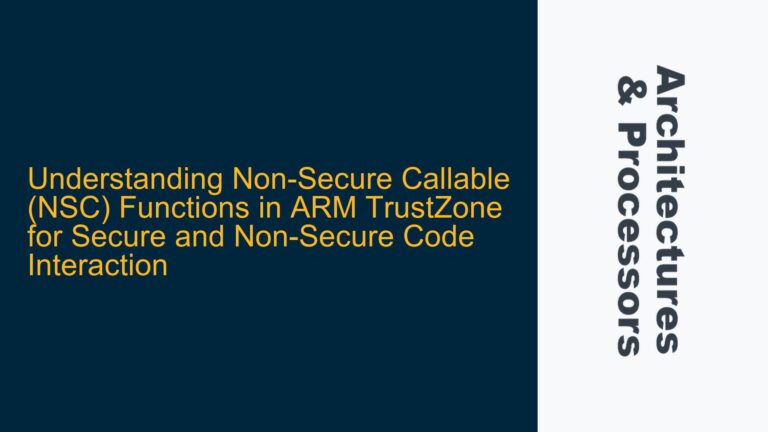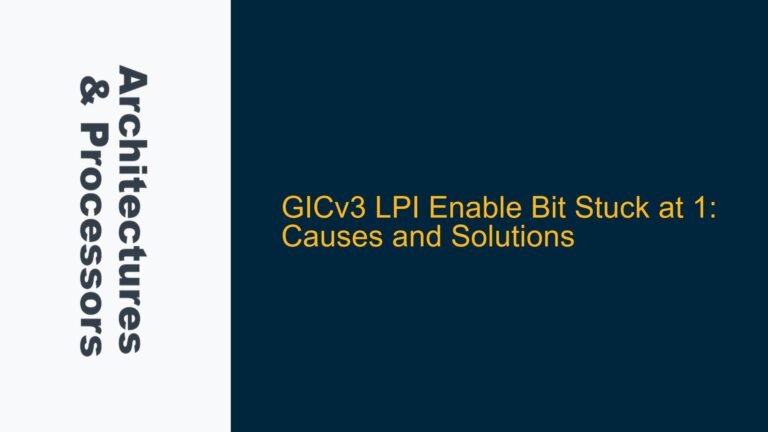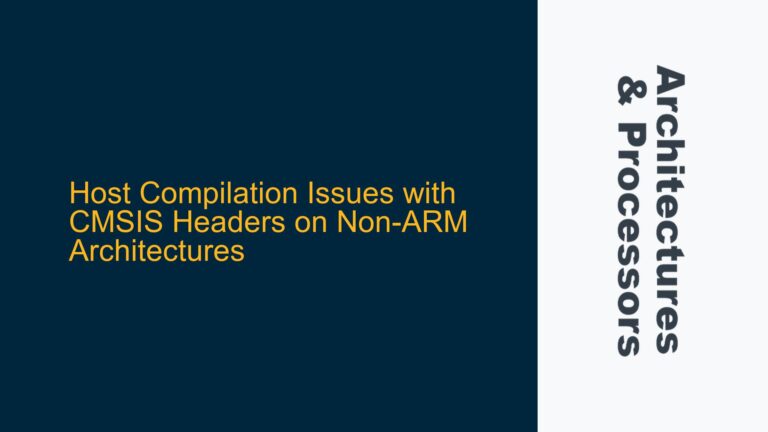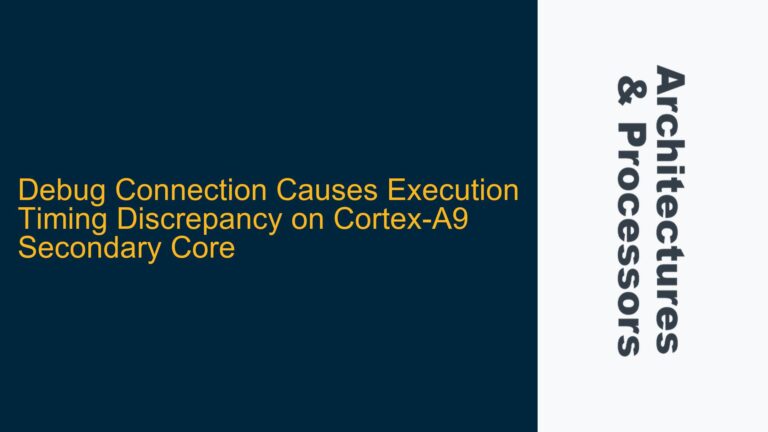AMBA APB Frequency Limitations and System Complexity
The Advanced Microcontroller Bus Architecture (AMBA) Advanced Peripheral Bus (APB) is a low-cost, low-power interface designed for connecting peripherals to a system-on-chip (SoC). Unlike high-performance buses such as AXI or AHB, APB is optimized for simplicity and ease of integration. However, one of the most common questions surrounding APB is its maximum operating frequency. The AMBA specification does not define a maximum frequency for APB, as this is inherently dependent on several factors, including the target silicon library, the complexity of the system design, and the synthesis constraints applied during implementation.
The absence of a predefined maximum frequency in the AMBA specification is intentional. APB is designed to be flexible and adaptable to a wide range of system requirements. The frequency at which APB can operate is primarily determined by the timing characteristics of the target technology library, the complexity of the address decoding logic, and the multiplexing logic required to handle multiple slaves on the bus. These factors collectively influence the critical path of the design, which in turn dictates the maximum achievable clock frequency.
In a typical APB system, the clock signal (PCLK) drives all the bus transactions. The simplicity of the APB protocol ensures that the interface logic on the slave devices is minimal, reducing the impact of slave complexity on the overall system frequency. However, the combinatorial logic blocks, such as the address decoder and the response multiplexer, play a significant role in determining the maximum frequency. These blocks are responsible for decoding the address from the master and selecting the appropriate slave response, respectively. As the number of slaves increases, the complexity of these combinatorial blocks grows, potentially introducing longer propagation delays and limiting the maximum frequency.
Factors Influencing APB Frequency: Silicon Libraries and Synthesis Effort
The maximum operating frequency of an APB bus is not solely determined by the protocol itself but is heavily influenced by the characteristics of the target silicon library and the effort invested during the synthesis process. Silicon libraries provide the foundational timing and power characteristics for the standard cells used in the design. These libraries define parameters such as gate delays, setup and hold times, and maximum toggle rates, which directly impact the achievable clock frequency.
When designing an APB-based system, the choice of silicon library is critical. High-performance libraries with faster gate delays and lower propagation times enable higher operating frequencies. Conversely, libraries optimized for low power or area efficiency may impose stricter limitations on frequency. Designers must carefully evaluate the trade-offs between performance, power, and area when selecting a silicon library for their APB implementation.
Synthesis effort also plays a pivotal role in determining the maximum frequency. Modern synthesis tools offer a range of optimization techniques, including retiming, gate sizing, and logic restructuring, to improve timing closure. By applying aggressive synthesis constraints and leveraging these optimization techniques, designers can push the operating frequency closer to the limits of the target technology. However, this often comes at the cost of increased power consumption and area overhead. Balancing these trade-offs requires a deep understanding of the design requirements and the capabilities of the synthesis tools.
In addition to the silicon library and synthesis effort, the physical implementation of the design can impact the maximum frequency. Factors such as routing congestion, signal integrity, and clock tree synthesis must be considered during the place-and-route phase. Poorly optimized physical designs can introduce additional delays and skew, further limiting the achievable frequency. Therefore, a holistic approach that considers both logical and physical design aspects is essential for maximizing APB performance.
Optimizing APB Frequency: Address Decode Logic and Slave Configuration
To achieve the highest possible operating frequency for an APB-based system, designers must focus on optimizing the address decode logic and the configuration of the slave devices. The address decoder is a critical component that translates the address from the master into select signals for the appropriate slave. As the number of slaves increases, the complexity of the address decoder grows, potentially introducing longer propagation delays. To mitigate this, designers can employ hierarchical decoding techniques, where the address space is divided into smaller segments, each handled by a separate decoder. This approach reduces the fan-out and propagation delay of the decode logic, enabling higher frequencies.
The response multiplexer, which selects the appropriate data from the active slave, is another area where optimization can yield significant benefits. By minimizing the number of inputs to the multiplexer and carefully structuring the logic, designers can reduce the critical path delay. Additionally, pipelining the multiplexer logic can help achieve higher frequencies at the cost of increased latency. This trade-off is often acceptable in APB systems, where latency is less critical than in high-performance buses.
The configuration of the slave devices also plays a role in determining the maximum frequency. While the APB protocol ensures that the interface logic on the slaves is minimal, the internal logic of the slaves can impact the overall system timing. Designers should ensure that the slave devices are designed to meet the timing requirements of the target frequency. This may involve optimizing the internal logic of the slaves or introducing pipelining to meet setup and hold time constraints.
In conclusion, the maximum operating frequency of an AMBA APB bus is not defined by the protocol itself but is influenced by a combination of factors, including the target silicon library, synthesis effort, and the complexity of the address decode and multiplexing logic. By carefully optimizing these aspects, designers can achieve the highest possible frequency for their APB-based systems while balancing performance, power, and area requirements.
